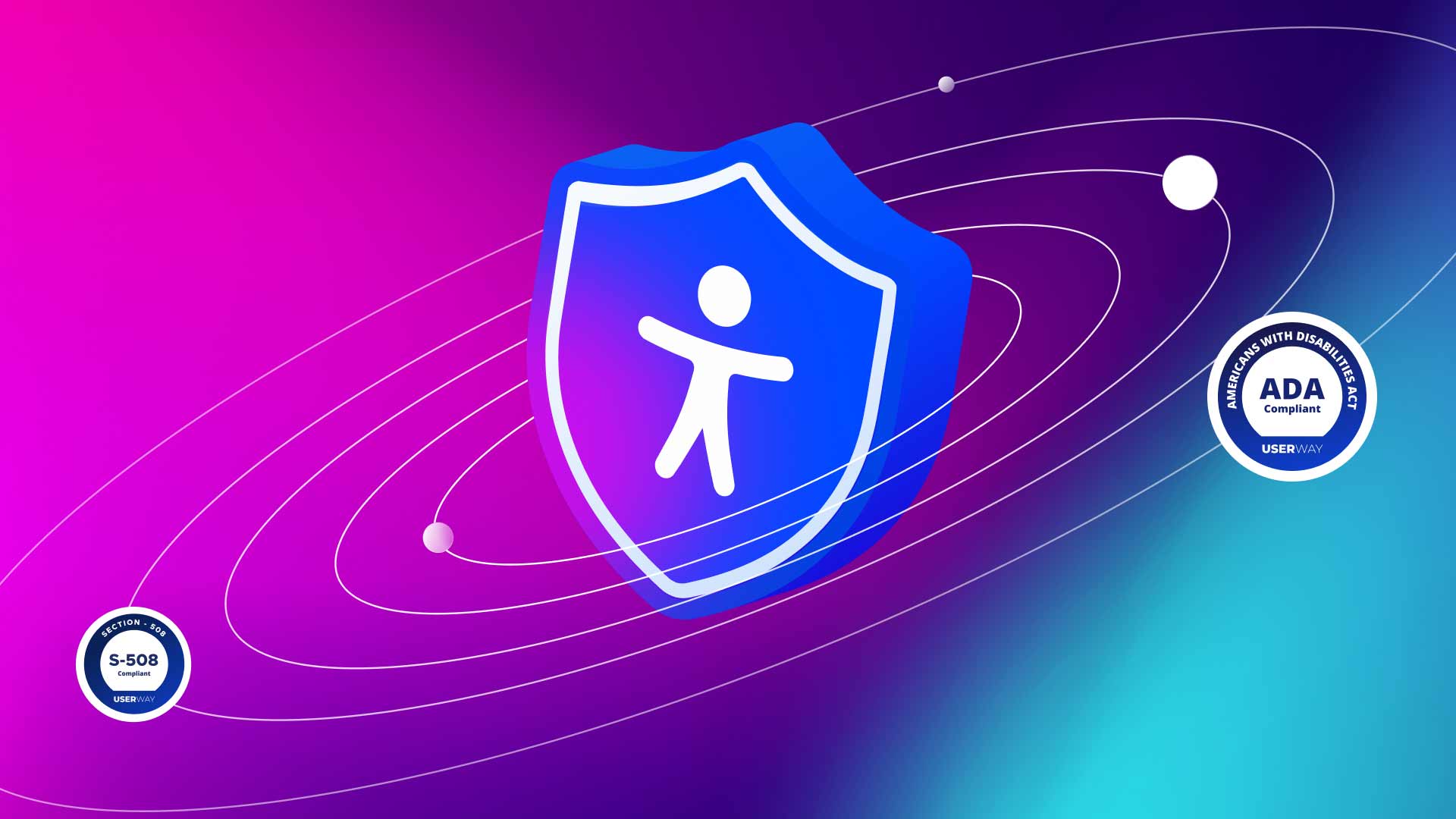Your Comparative Guide: WCAG vs ADA vs Section 508

Ensuring web accessibility is not just a best practice but also a legal requirement. But all the acronyms in the digital accessibility space can get confusing and overwhelming. In this piece, we’re going to clarify the differences and similarities among three important accessibility rules and laws: Web Content Accessibility Guidelines (WCAG), the Americans with Disabilities Act (ADA), and Section 508 of the Rehabilitation Act. Our goal is to help you grasp what you need to do and make smart choices for web accessibility.
Comparative Overview
To facilitate a clear understanding of WCAG vs ADA vs Section 508, let’s start by outlining the key characteristics in a high-level table:
| Feature | WCAG | ADA | Section 508 |
|---|---|---|---|
| Framework | International Standard | US Federal Law | US Federal Law |
| Primary Focus | Web Content Accessibility | Non-Discrimination | Federal Information and Communication Technology Accessibility |
| Applicability | Global | US Specific Title I: Private Entities Employment Title II: Public Services and Local Government Title III: Private Entities Public Accommodations and Services |
US Federal Agencies and Contractors |
| Development Authority | World Wide Web Consortium (W3C) | United States Congress | US Access Board |
| Version | Currently WCAG 2.2 | Title III of ADA (1990) | Section 508 of the Rehabilitation Act (1998) |
| Conformance Levels | WCAG A, AA, AAA | N/A (Not Applicable) | WCAG A, AA |
| Compliance Timeline | Ongoing | Since 1990 | Since 1998 |
| Scope | All Digital Content | Public Accommodations, Employers | Federal Information and Communication Technology (ICT) |
| Enforcement | Self-regulation, legal action | Department of Justice (DOJ) | US Access Board, Legal Action |
Detailed Comparison
Here is a more detailed look at how WCAG vs ADA vs Section 508 relate and interact.
Legal Framework
WCAG: Developed by the W3C, WCAG is an international set of guidelines and not legally binding on its own. However, WCAG guidelines are commonly the standard which laws measure against for compliance.
ADA: The Americans with Disabilities Act is a US federal law that made discrimination against people with disabilities illegal.
Section 508: Section 508 is part of the Rehabilitation Act of 1973, amended in 1998. It specifically addresses ICT accessibility in federal agencies and their contractors.
Primary Focus
WCAG: The only focus of WCAG is to guide organizations across the world to make web content accessible to people with disabilities.
ADA: The ADA‘s focus is on non-discrimination in various areas, including public accommodations, which encompasses digital services.
Section 508: Concentration for Section 508 is on accessibility in Federal information and communication technology (ICT), along with the organizations that take federal dollars to contract work.
Applicability
WCAG: Applies globally, and many countries use it as a reference for their accessibility standards.
ADA: Applies in the United States but has influenced accessibility initiatives worldwide.
Title II mandates public organizations to ensure their offerings are accessible to disabled people. It bans discrimination because of disability by government agencies in the U.S., including state and local governments.
Title III of ADA focuses on public accommodations, which includes digital spaces. It makes it against the law for public places of commerce from discriminating against people with disabilities. These public places include private facilities like stores, restaurants, hotels, medical buildings, schools, gyms, sports venues, movie theaters, and so on.
Section 508: Applies specifically to US federal agencies and their contractors’ ICT.
Development Authority
WCAG: Developed and maintained by the W3C community, a consortium that includes representatives from various organizations worldwide.
ADA: Enacted by the United States Congress.
Section 508: Governed by the US Access Board.
Version
WCAG: The latest version is WCAG 2.2, with previous versions like WCAG 2.0 and 2.1 also widely referenced.
ADA: ADA Title III was enacted in 1990, with no specific version numbers.
Section 508: Section 508 was added to the Rehabilitation Act in 1998.
Conformance Levels
WCAG: Offers three conformance levels: A, AA, and AAA, with AA being the most commonly followed level.
ADA: Does not have conformance levels like WCAG.
Section 508: Follows the same conformance levels as WCAG.
Compliance Timeline
WCAG: Compliance is ongoing, with updates and improvements made regularly. The current version, WCAG 2.2, was published in October 2023.
ADA: Enforced since its enactment in 1990.
Section 508: Enforced since its amendment in 1998.
Scope
WCAG: Applies to all digital content, including websites, applications, and documents.
ADA: Covers public accommodations and employers in various settings, including digital spaces. Title III directs businesses to make reasonable inclusive changes to their usual ways of doing things when serving people with disabilities. It also requires businesses to make an effort to communicate equally with all people with disabilities, including those with disabilities related to hearing, vision, and speech.
Section 508: Focuses on federal electronic and information technology. This federal law requires agencies to provide people with disabilities equal access to electronic information and data comparable to those who do not have disabilities, unless an undue burden would be imposed on the agency.
Enforcement
WCAG: Enforcement is often driven by voluntary compliance. However, many countries and institutions reference WCAG in their laws and regulations.
ADA: Enforced by the Department of Justice (DOJ) through investigations, complaints, and legal actions.
Section 508: Enforced by the US Access Board, but individuals with disabilities can file a complaint with an agency or bring a civil action in Federal Court for an agency’s noncompliance.
Conclusion
In summary, WCAG, ADA, and Section 508 are distinct but interconnected elements of the web accessibility landscape. While WCAG serves as an international guideline, the ADA and Section 508 are US legal frameworks with specific jurisdictions.
UserWay: For your entire accessibility journey
Understanding the nuances of these standards is crucial for organizations aiming to create accessible digital experiences and comply with legal requirements. UserWay is here to help you stay updated with the latest guidelines and regulations to ensure inclusivity and equal access for all.
In addition, UserWay’s offerings help you comply with ADA law and conform with WCAG 2.2 guidelines at every step of your web accessibility journey–from our AI-powered widget to full-scale Managed Accessibility services.
Schedule time with an accessibility expert today.
FAQ
What is the main difference between WCAG and ADA when it comes to web accessibility?
The main difference lies in their nature and scope.
WCAG is a set of international standards created by the W3C to make digital content accessible to all, and it’s followed globally but has no legal authority.
ADA, on the other hand, is a US federal law that focuses on non-discrimination against individuals with disabilities. Title II applies to public entities, and Title III extends to public accommodations, which includes digital spaces, but it’s primarily applicable in the United States.
How can I check if my website complies with WCAG, ADA, and Section 508?
To determine if your website meets WCAG standards, it should align with the four core principles of WCAG, represented by the acronym “POUR,” which stands for Perceivable, Operable, Understandable, and Robust. Ensuring your website meets these principles is essential for compliance. Additionally, you can use an accessibility checker, such as UserWay’s Accessibility Scanner, to assess your WCAG conformance and identify areas that need accessibility improvement.




Share